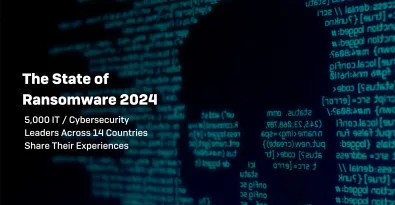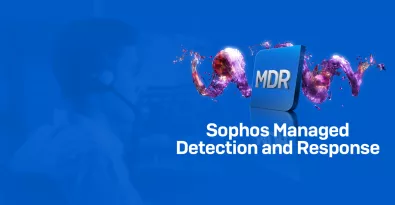In today's interconnected and digitized world, organizations face potential cybersecurity risks coming from all sides. The nature of today's complex, distributed business IT systems and networks only increases these potential risks. They can quickly move from cyber risks to real threats, compromising your network's confidentiality, integrity, and availability. Read on to learn how cyber risk management helps you improve your cybersecurity posture and be more proactive in preventing cyber-attacks, web or cloud vulnerabilities, ransomware, malware, data breaches, and everything in between.
What is Cyber Risk Management?
Cyber risk management involves identifying, assessing, and mitigating potential risks and threats related to information technology systems, networks, and data. Your enterprise systems face numerous cyber threats in today's interconnected and digitized world. These threats can compromise the confidentiality, integrity, and availability of your sensitive information.
Critical components of cyber risk management include:
- Risk Identification: Identifying potential cyber threats and vulnerabilities that could impact an organization's information assets. This involves understanding the organization's IT infrastructure, data, and the potential risks associated with various technologies.
- Risk Assessment: Evaluate the potential impact of any risks discovered during the identification phase. This step involves analyzing the vulnerabilities, assessing the potential threats, and determining the associated risk level.
- Risk Mitigation: Implement measures to reduce any identified risks. This may include implementing security controls, encryption, access controls, and other measures to protect against potential threats.
- Incident Response and Recovery: Develop and implement plans for responding to cyber incidents.
- Monitoring and Review: Continuously monitor the IT environment for new threats and vulnerabilities.
- Compliance and Governance: Ensuring that the organization complies with relevant laws, regulations, and industry standards related to information security. This involves establishing governance structures and policies to guide the organization's approach to cybersecurity.
- Employee Training and Awareness: Educate your employees with services such as phishing simulation on cybersecurity best practices. Inform them about the potential risks of poor security hygiene. Human behavior plays a significant role in cyber risk. Educated employees can contribute to a more secure environment.
Why Is Cyber Risk Management Important?
Cyber risk management is crucial for organizations to safeguard their sensitive information. It is an ongoing and dynamic process that requires regular assessment and adaptation to the changing threat landscape.
Who Is Responsible for Cyber Risk Management?
Responsibility for cyber risk management falls across various organizational roles and functions. The level of responsibility may vary depending on the organization's size, structure, and industry. Here are key stakeholders who commonly play a role in cyber risk management:
- Chief Information Security Officer (CISO): CISOs are often the senior executives responsible for an organization's overall cybersecurity strategy and management. CISOs usually lead in identifying, assessing, and mitigating cyber risks and developing and implementing cybersecurity policies and practices.
- IT Security Team: Security professionals within the IT department are directly involved in implementing and managing security measures, monitoring systems for potential threats, and responding to incidents. This team may include security analysts, engineers, and administrators.
- Risk Management Team: In larger organizations, a dedicated risk management team may assess and mitigate various types of risks, including cyber risks. This team may work closely with IT and cybersecurity professionals to integrate cyber risk into the broader risk management framework.
- Chief Information Officer (CIO): The CIO drives your information technology's overall management and strategy. While the CISO focuses on cybersecurity specifically, the CIO ensures that the IT infrastructure and systems align with the organization's overall goals and objectives, including cybersecurity-related ones.
- Legal and Compliance Teams: Professionals in legal and compliance roles ensure that the organization adheres to relevant laws, regulations, and industry standards. They play a crucial role in managing legal and regulatory risks associated with cybersecurity.
- Executive Leadership and Board of Directors: The executive leadership team and the board of directors are ultimately responsible for the organization's governance, including cybersecurity. They set the overall risk tolerance, approve cybersecurity budgets, and ensure that cybersecurity is integrated into the organization's overall risk management strategy.
- Employees: Every employee has a role in cyber risk management. Following security policies, being aware of phishing attempts, and practicing good cybersecurity hygiene contribute to the overall resilience of an organization.
Effective cyber risk management often involves collaboration and communication among these various stakeholders. You should foster a culture of cybersecurity awareness. Ensure that everyone in your organization understands their role in protecting the organization from cyber threats.


